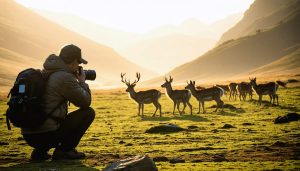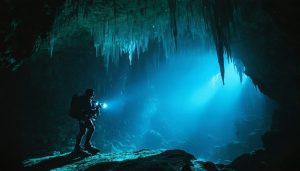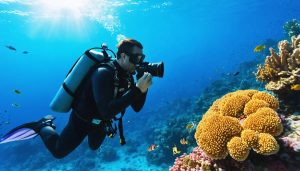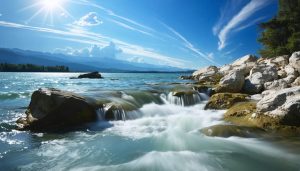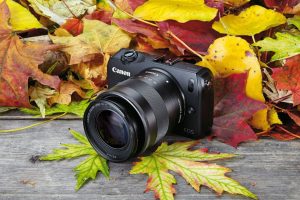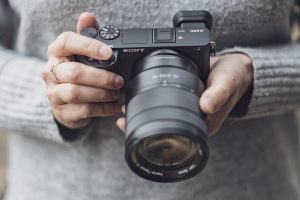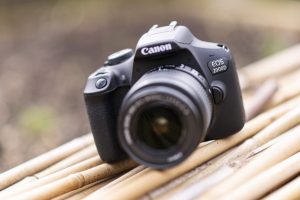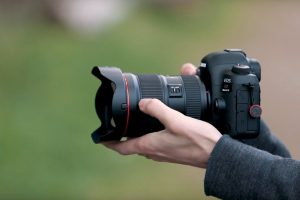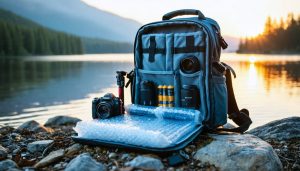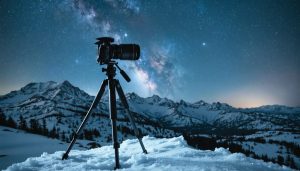
Transform ordinary portraits into compelling visual stories by capturing subjects in their most authentic environments. Environmental portraiture merges technical mastery with storytelling prowess, demanding photographers to orchestrate natural light, composition, and human elements within meaningful locations. Whether documenting an artist in their studio, a chef in their kitchen, or an athlete in their training ground, this challenging genre shares many technical demands with extreme weather photography – requiring quick thinking, adaptability, and precise control over challenging lighting conditions.
Master environmental portraits by studying your subject’s space before the shoot, identifying natural frames and leading lines that reinforce their story. Scout locations during different times of day to understand how light interacts with the environment, creating depth through layers of foreground, middle ground, and background elements. Position subjects where their natural movements and interactions with their space feel unforced, allowing their personality to shine through authentic gestures and expressions.
The most powerful environmental portraits reveal deeper truths about their subjects – showing not just where they are, but who they are. This delicate balance between technical execution and emotional authenticity sets environmental portraiture apart as one of photography’s most rewarding challenges.
What Makes Environmental Portraits Different in Extreme Conditions
The Dance Between Subject and Environment
Extreme weather conditions create a fascinating interplay between subject and environment that can elevate an environmental portrait from good to extraordinary. When your subject faces driving rain, howling winds, or intense heat, their natural reactions become part of the visual narrative, adding authenticity and emotional depth to your images.
Consider a portrait taken during a summer thunderstorm: your subject’s hair whipping in the wind, their clothes clinging to their form, and their expression showing a mix of exhilaration and challenge. These elements work together to tell a compelling story that a studio portrait simply cannot match.
The environment becomes more than just a backdrop – it’s an active participant in your composition. A fisherman leaning into arctic winds, a farmer squinting against a dust storm, or a mountaineer emerging from swirling snow all create natural tension that draws viewers into the moment. This dynamic relationship between person and nature offers photographers unique opportunities to capture genuine human experiences.
The key is to anticipate and embrace these moments of environmental interaction, using them to strengthen your visual narrative rather than fighting against them.
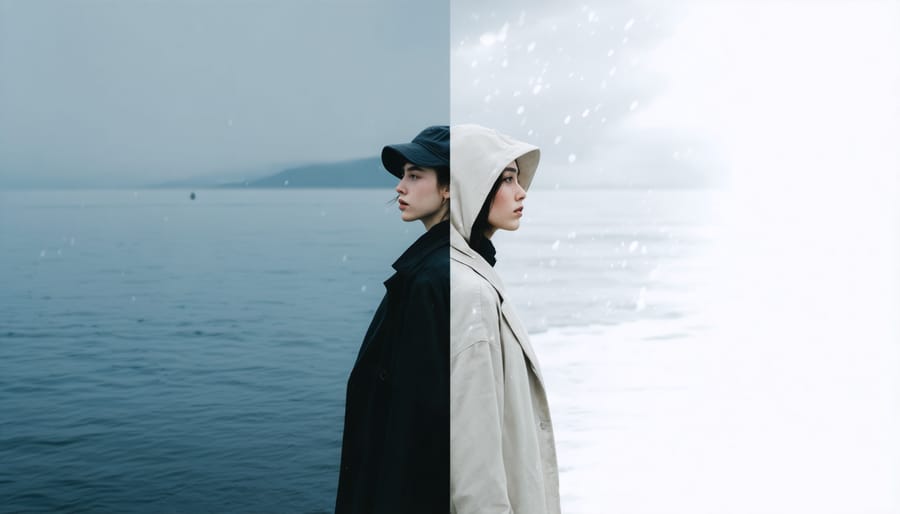
Beyond Traditional Portrait Rules
While traditional portrait rules like the rule of thirds and perfect lighting setups serve as valuable foundations, environmental portraiture often demands breaking these conventions. In extreme conditions, you might find yourself shooting from unusual angles to capture the relationship between subject and environment, even if it means abandoning perfectly centered compositions or ideal face positioning.
The classic portrait lighting patterns – Rembrandt, butterfly, or loop lighting – may need to give way to more practical solutions. When photographing a mountain climber on a cliff face or a researcher in a dark cave, your lighting choices will be dictated more by safety and accessibility than aesthetic ideals.
Similarly, the conventional wisdom about focal lengths for portraiture (typically 85mm to 200mm) might not apply when you need to showcase vast landscapes or work in tight spaces. You might opt for a wider lens to capture more environment or use unusual perspectives that traditional portrait photography would typically avoid.
Remember, the goal in environmental portraiture is authenticity and context, not perfection. Sometimes, a slightly unconventional composition or challenging lighting situation can actually enhance the story you’re trying to tell.
Essential Gear and Protection
Weather-Sealing Essentials
When shooting in extreme conditions, protecting your gear becomes as crucial as capturing the perfect shot. Start with a high-quality camera rain cover – Think Tank’s Hydrophobia series and Peak Design’s Shell are excellent options that offer quick access to controls while keeping moisture out. For desert environments, invest in weather-sealed lens filters and bring multiple microfiber cloths to combat sand and dust.
Don’t overlook the importance of silica gel packets – pack several in your camera bag to combat humidity. In cold climates, keep spare batteries close to your body, as cold temperatures dramatically reduce battery life. A weather-sealed camera body and lenses are worth the investment, but even these need additional protection in harsh conditions.
Consider using lens hoods not just for flare control, but as physical protection against rain and snow. Bring large zip-lock bags for quick transitions between temperature extremes to prevent condensation. For beach shoots, a protective UV filter is essential, and always keep a rocket blower handy to remove sand particles.
Pro tip: Create a “first aid kit” for your gear, including gaffer tape, cleaning supplies, and spare weather seals. This can save a shoot when unexpected weather changes occur. Remember that different environments require different protection strategies – what works in tropical humidity might not be suitable for arctic conditions.
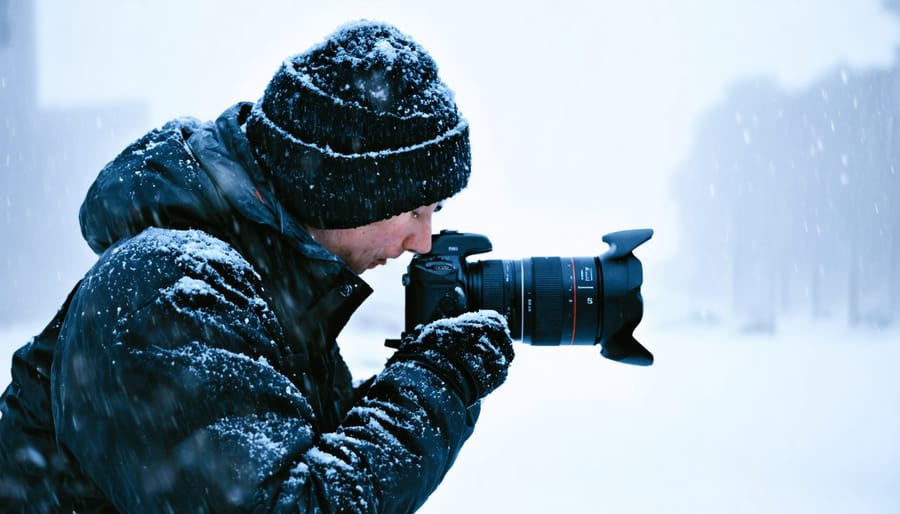
Backup Systems and Safety Measures
When shooting environmental portraits in challenging conditions, having reliable backup systems and safety measures isn’t just recommended—it’s essential. Always pack at least two camera bodies and three lenses, storing them in waterproof, climate-controlled cases. Keep your batteries warm in extreme cold by storing them close to your body, and always carry twice as many as you think you’ll need.
Your gear checklist should include emergency supplies like a first-aid kit, satellite phone or emergency beacon, and appropriate weather gear. When shooting in remote locations, share your detailed itinerary with someone reliable and establish check-in protocols.
For data security, use cameras with dual card slots and write to both simultaneously. Carry multiple memory cards and a portable backup drive, storing them in separate waterproof containers. Consider bringing a laptop for immediate backups if conditions allow.
Weather-specific preparations are crucial. In wet conditions, pack silica gel packets and rain covers. For desert shoots, bring lens cleaning supplies and protective filters. In extreme cold, include hand warmers and insulated gear bags.
Most importantly, never compromise safety for a shot. Work with local guides when necessary, respect weather warnings, and maintain clear communication with your subject and team. Remember that even the most stunning portrait isn’t worth risking personal safety or equipment damage.
Technical Considerations in Harsh Environments
Exposure Challenges
Environmental portraiture often presents unique exposure challenges due to the unpredictable nature of outdoor lighting conditions. Whether you’re shooting in harsh midday sun, dappled forest shade, or during the golden hour, mastering exposure in difficult conditions requires both technical knowledge and quick decision-making skills.
One common challenge is dealing with high contrast scenes, where your subject might be in shadow while the background is brightly lit. In these situations, spot metering can be your best friend. Focus your camera’s meter on your subject’s face and expose for that, even if it means letting the background become slightly overexposed. Remember, a properly exposed face is usually more important than perfect background exposure.
Mixed lighting presents another hurdle, especially when artificial light sources compete with natural light. Consider using a reflector to bounce natural light onto your subject, helping to balance the exposure and create more flattering light. For situations where the ambient light is too dim, a flash with diffusion can help fill in shadows while maintaining the environmental context.
Backlit scenes can be particularly tricky but often yield stunning results. When shooting against bright backgrounds, exposure compensation is your ally. Try overexposing by 1-2 stops to properly expose your subject while creating a dreamy, ethereal effect with the background. Just be careful not to blow out important highlight details.
Weather conditions can also impact exposure decisions. Overcast days might require bumping up your ISO, while bright snow or beach scenes might need negative exposure compensation to prevent overexposure. Keep your histogram visible and don’t rely solely on your camera’s LCD screen for exposure judgment.
Focus and Composition Strategies
Mastering focus and composition in environmental portraiture requires a delicate balance between technical precision and creative vision. Start by identifying your main subject and determining how the environment will complement their story. Consider using the rule of thirds to position your subject, but don’t be afraid to break this rule when the environment demands a different approach.
When working with challenging environments, maintain sharp focus by using a slightly smaller aperture (f/5.6 to f/8) to increase your depth of field, especially when incorporating important background elements. In low-light situations, use your camera’s back-button focus to lock onto your subject, preventing the autofocus from hunting in challenging conditions.
Leading lines in the environment can naturally draw attention to your subject. Look for architectural elements, pathways, or natural formations that create visual paths. Position your subject where these lines intersect or lead to create dynamic compositions that tell a complete story.
Consider the environmental scale in your composition. Sometimes showing the vastness of a location can make your subject appear small and create a sense of drama. Other times, filling the frame with both subject and immediate surroundings can create intimacy and context.
Pay attention to distracting elements that might compete with your subject. While environmental portraits should include context, avoid cluttered backgrounds or bright objects that pull attention away from your subject. Move around to find angles that maintain the environmental context while eliminating unwanted elements.
When dealing with challenging lighting conditions, spot metering on your subject’s face can help maintain proper exposure while still capturing the atmosphere of the location. Remember to check your histogram frequently, as extreme environments can often fool your camera’s light meter.
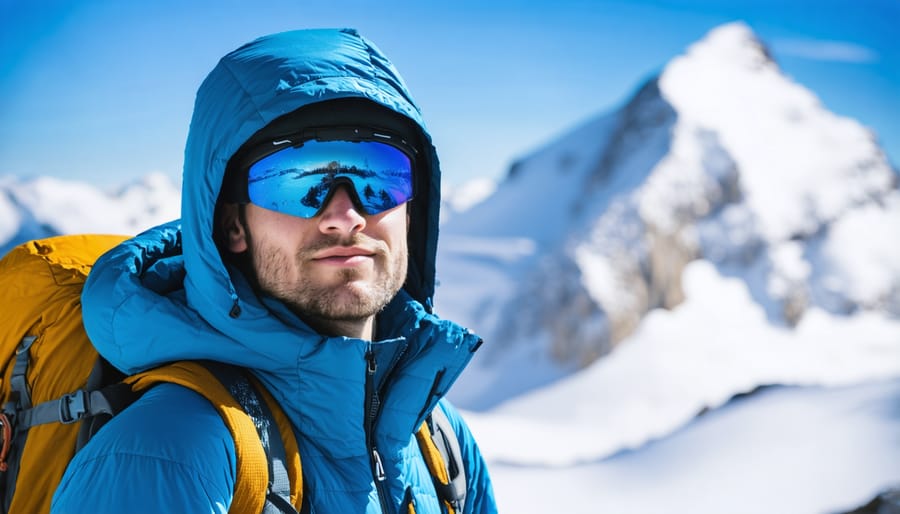
Working with Your Subject
Building Trust and Comfort
Building trust with your subject is crucial when shooting in challenging environments. The key is to establish a connection before even picking up your camera. Start with a casual conversation about their comfort level and any concerns they might have about the location or conditions. This helps create a collaborative atmosphere rather than a directive one.
During the shoot, maintain constant communication. Keep checking in about their comfort level, especially in extreme temperatures or challenging terrain. Remember that what might feel manageable to you as a photographer could be pushing your subject’s limits. Watch for signs of discomfort or fatigue, and be ready to take breaks when needed.
A useful technique is to share your vision for the shots and involve subjects in the creative process. When people understand the “why” behind certain poses or locations, they’re more likely to stay engaged and push through challenging conditions. Show them some preliminary shots on your camera’s LCD screen to help them understand how their patience and cooperation are contributing to powerful images.
Consider creating a more relaxed atmosphere by sharing your own experiences or funny stories about similar shoots. This helps normalize any awkwardness and creates a shared experience. If working in particularly challenging conditions, bring comfort items like water, snacks, or weather-appropriate gear for your subject. These thoughtful gestures demonstrate professionalism and care for their well-being.
Capturing Authentic Moments
Creating authentic moments in environmental portraiture requires a delicate balance between technical expertise and interpersonal skills. The key is to help your subjects feel comfortable despite challenging surroundings, allowing their genuine personalities to shine through.
Start by engaging in casual conversation before raising your camera. This helps break the ice and allows you to observe natural expressions and gestures that you can later encourage during the shoot. When working with lighting techniques in challenging environments, avoid rushing your setup – this can make subjects nervous and result in forced expressions.
Consider implementing the “shoot and wait” technique: take a few shots, then lower your camera while continuing the conversation. This approach helps subjects forget about the camera’s presence, leading to more natural poses and expressions. Watch for authentic moments during these conversations, and be ready to capture them quickly.
Environmental challenges can actually work to your advantage in creating genuine expressions. The shared experience of dealing with weather conditions or unique locations can create bonding moments between photographer and subject. Use these situations to capture candid reactions and real emotions.
Remember to give clear but gentle direction. Instead of commanding specific poses, suggest actions that feel natural to the location – like leaning against a weathered wall or interacting with the environment. This approach yields more authentic results while maintaining the environmental context of your portrait.
Post-Processing Considerations
Color and Contrast Management
Mastering color and exposure management in environmental portraiture can be particularly challenging when dealing with extreme weather conditions. Harsh sunlight, heavy snow, or dense fog can dramatically affect your camera’s ability to capture accurate colors and maintain proper contrast.
In bright, sunny conditions, consider using a circular polarizing filter to manage reflections and enhance color saturation. This is especially useful when photographing subjects near water or snow, where glare can wash out important details. During golden hour, warm tones can become overwhelming – combat this by adjusting your white balance slightly cooler to maintain natural skin tones while preserving the atmospheric quality of the light.
For snowy environments, your camera’s meter will typically underexpose the scene, rendering snow as gray rather than white. Compensate by adding 1-2 stops of exposure compensation. In foggy conditions, contrast naturally decreases, so consider using the dehaze function in post-processing, or add contrast selectively to your subject while maintaining the moody atmosphere of the fog.
Remember that extreme weather can affect your LCD screen’s visibility, making it harder to judge exposure and color accurately. Always shoot in RAW format to give yourself maximum flexibility in post-processing, and consider using your histogram as a more reliable guide than your LCD display. When possible, take test shots and check your results before committing to a full session in challenging conditions.

Weather Element Enhancement
Weather elements can dramatically enhance or detract from environmental portraits, and knowing how to control their impact is crucial. When working with rain, consider using a longer shutter speed to capture streaks of droplets, creating a moody atmosphere. Alternatively, use a fast shutter speed to freeze raindrops, adding crystalline clarity to your image.
For snow scenes, adjusting your camera’s exposure compensation by +1 or +2 stops helps prevent the white snow from appearing gray. Using a circular polarizing filter can enhance the contrast between falling snow and your subject while reducing unwanted glare from wet surfaces.
Wind can be either friend or foe. Embrace natural movement by capturing flowing hair or clothing, but be prepared with stabilization techniques for your camera. When shooting in strong winds, position your subject so the wind comes from behind them to avoid unflattering facial expressions.
Fog and mist can create ethereal effects, but they often reduce contrast. Combat this by positioning your subject closer to the camera and using spot metering to ensure proper exposure. Adding a subtle flash can help separate your subject from the misty background.
For harsh sunlight, timing is everything. The golden hours provide naturally flattering light, but when shooting midday, use diffusers or seek natural shade. Remember that weather elements can add authenticity to your environmental portraits, so don’t always fight against them – sometimes embracing the conditions creates the most compelling images.
Environmental portraiture represents a unique blend of technical skill, creative vision, and human connection. As we’ve explored throughout this article, success in this field requires more than just camera expertise – it demands adaptability, preparation, and a keen eye for storytelling through environmental elements.
Remember that every location presents its own set of challenges and opportunities. Whether you’re shooting in a bustling city market, a quiet artist’s studio, or a remote wilderness location, approach each session with both confidence and respect for your subject and their environment. Start with simpler scenarios and gradually push your boundaries as your skills and comfort level grow.
Safety should always remain paramount. Never compromise on proper preparation and risk assessment, especially when working in challenging environments. Keep your equipment protected, maintain clear communication with your subjects, and always have a backup plan.
The most compelling environmental portraits often emerge when photographers take calculated risks while staying within their capabilities. Challenge yourself to find unique perspectives, experiment with different lighting conditions, and incorporate environmental elements in unexpected ways. However, remember that the ultimate goal is to create authentic representations of your subjects in their natural spaces.
As you continue your journey in environmental portraiture, focus on developing your own distinctive style while learning from each experience. Every session is an opportunity to refine your technique, build your portfolio, and create meaningful connections with your subjects. With practice, patience, and persistence, you’ll find that environmental portraiture can be one of the most rewarding genres of photography.
Trust your instincts, stay safe, and keep pushing your creative boundaries – the perfect environmental portrait is waiting to be captured.


